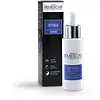What's inside
What's inside
 Key Ingredients
Key Ingredients

 Benefits
Benefits

 Concerns
Concerns

 Ingredients Side-by-side
Ingredients Side-by-side

Water
Skin ConditioningDimethicone
EmollientIsodecyl Neopentanoate
EmollientIsononyl Isononanoate
EmollientPropanediol
SolventCetearyl Alcohol
EmollientCaprylyl Methicone
Skin ConditioningCetyl Alcohol
EmollientGlycerin
HumectantPentylene Glycol
Skin ConditioningPEG-100 Stearate
Bakuchiol
AntimicrobialDimethicone Crosspolymer
Emulsion StabilisingGlyceryl Stearate
EmollientCetearyl Glucoside
Emulsifying4-T-Butylcyclohexanol
Masking1,2-Hexanediol
Skin ConditioningCaprylyl Glycol
EmollientSodium Acrylate/Sodium Acryloyldimethyl Taurate Copolymer
Emulsion StabilisingIsohexadecane
EmollientButylene Glycol
HumectantXanthan Gum
EmulsifyingGlycine Soja Oil
EmollientPolysorbate 80
EmulsifyingHydroxypropyl Cyclodextrin
MaskingSorbitan Oleate
EmulsifyingRetinol
Skin ConditioningCarbomer
Emulsion StabilisingPalmitoyl Tripeptide-38
Skin ConditioningAcacia Senegal Gum Extract
Tocopherol
AntioxidantPropylene Glycol Alginate
Water, Dimethicone, Isodecyl Neopentanoate, Isononyl Isononanoate, Propanediol, Cetearyl Alcohol, Caprylyl Methicone, Cetyl Alcohol, Glycerin, Pentylene Glycol, PEG-100 Stearate, Bakuchiol, Dimethicone Crosspolymer, Glyceryl Stearate, Cetearyl Glucoside, 4-T-Butylcyclohexanol, 1,2-Hexanediol, Caprylyl Glycol, Sodium Acrylate/Sodium Acryloyldimethyl Taurate Copolymer, Isohexadecane, Butylene Glycol, Xanthan Gum, Glycine Soja Oil, Polysorbate 80, Hydroxypropyl Cyclodextrin, Sorbitan Oleate, Retinol, Carbomer, Palmitoyl Tripeptide-38, Acacia Senegal Gum Extract, Tocopherol, Propylene Glycol Alginate
Water
Skin ConditioningGlycerin
HumectantCaprylic/Capric Triglyceride
MaskingDimethicone
EmollientPropanediol
SolventGlyceryl Stearate Citrate
EmollientGossypium Herbaceum Seed Oil
Skin ConditioningLaminaria Digitata Extract
Skin ProtectingLinum Usitatissimum Seed Oil
PerfumingElaeis Guineensis Oil
EmollientBidens Pilosa Extract
HumectantChlorella Vulgaris Extract
Skin ConditioningRetinyl Palmitate
Skin ConditioningTocopherol
AntioxidantSaccharide Isomerate
HumectantPhosphatidylcholine
EmulsifyingCholesterol
EmollientMannitol
HumectantMaris Aqua
HumectantAcrylates/C10-30 Alkyl Acrylate Crosspolymer
Emulsion StabilisingXanthan Gum
EmulsifyingTetrasodium Glutamate Diacetate
Potassium Sorbate
PreservativeSodium Benzoate
MaskingEthylhexylglycerin
Skin ConditioningCitric Acid
BufferingPhenethyl Alcohol
MaskingSodium Chloride
MaskingSodium Hydroxide
BufferingPhenoxyethanol
PreservativeWater, Glycerin, Caprylic/Capric Triglyceride, Dimethicone, Propanediol, Glyceryl Stearate Citrate, Gossypium Herbaceum Seed Oil, Laminaria Digitata Extract, Linum Usitatissimum Seed Oil, Elaeis Guineensis Oil, Bidens Pilosa Extract, Chlorella Vulgaris Extract, Retinyl Palmitate, Tocopherol, Saccharide Isomerate, Phosphatidylcholine, Cholesterol, Mannitol, Maris Aqua, Acrylates/C10-30 Alkyl Acrylate Crosspolymer, Xanthan Gum, Tetrasodium Glutamate Diacetate, Potassium Sorbate, Sodium Benzoate, Ethylhexylglycerin, Citric Acid, Phenethyl Alcohol, Sodium Chloride, Sodium Hydroxide, Phenoxyethanol
Ingredients Explained
These ingredients are found in both products.
Ingredients higher up in an ingredient list are typically present in a larger amount.
Dimethicone is a type of synthetic silicone created from natural materials such as quartz.
What it does:
Dimethicone comes in different viscosities:
Depending on the viscosity, dimethicone has different properties.
Ingredients lists don't always show which type is used, so we recommend reaching out to the brand if you have questions about the viscosity.
This ingredient is unlikely to cause irritation because it does not get absorbed into skin. However, people with silicone allergies should be careful about using this ingredient.
Note: Dimethicone may contribute to pilling. This is because it is not oil or water soluble, so pilling may occur when layered with products. When mixed with heavy oils in a formula, the outcome is also quite greasy.
Learn more about DimethiconeGlycerin is already naturally found in your skin. It helps moisturize and protect your skin.
A study from 2016 found glycerin to be more effective as a humectant than AHAs and hyaluronic acid.
As a humectant, it helps the skin stay hydrated by pulling moisture to your skin. The low molecular weight of glycerin allows it to pull moisture into the deeper layers of your skin.
Hydrated skin improves your skin barrier; Your skin barrier helps protect against irritants and bacteria.
Glycerin has also been found to have antimicrobial and antiviral properties. Due to these properties, glycerin is often used in wound and burn treatments.
In cosmetics, glycerin is usually derived from plants such as soybean or palm. However, it can also be sourced from animals, such as tallow or animal fat.
This ingredient is organic, colorless, odorless, and non-toxic.
Glycerin is the name for this ingredient in American English. British English uses Glycerol/Glycerine.
Learn more about GlycerinPropanediol is an all-star ingredient. It softens, hydrates, and smooths the skin.
It’s often used to:
Propanediol is not likely to cause sensitivity and considered safe to use. It is derived from corn or petroleum with a clear color and no scent.
Learn more about PropanediolTocopherol (also known as Vitamin E) is a common antioxidant used to help protect the skin from free-radicals and strengthen the skin barrier. It's also fat soluble - this means our skin is great at absorbing it.
Vitamin E also helps keep your natural skin lipids healthy. Your lipid skin barrier naturally consists of lipids, ceramides, and fatty acids. Vitamin E offers extra protection for your skin’s lipid barrier, keeping your skin healthy and nourished.
Another benefit is a bit of UV protection. Vitamin E helps reduce the damage caused by UVB rays. (It should not replace your sunscreen). Combining it with Vitamin C can decrease sunburned cells and hyperpigmentation after UV exposure.
You might have noticed Vitamin E + C often paired together. This is because it is great at stabilizing Vitamin C. Using the two together helps increase the effectiveness of both ingredients.
There are often claims that Vitamin E can reduce/prevent scarring, but these claims haven't been confirmed by scientific research.
Learn more about TocopherolWater. It's the most common cosmetic ingredient of all. You'll usually see it at the top of ingredient lists, meaning that it makes up the largest part of the product.
So why is it so popular? Water most often acts as a solvent - this means that it helps dissolve other ingredients into the formulation.
You'll also recognize water as that liquid we all need to stay alive. If you see this, drink a glass of water. Stay hydrated!
Learn more about WaterXanthan gum is used as a stabilizer and thickener within cosmetic products. It helps give products a sticky, thick feeling - preventing them from being too runny.
On the technical side of things, xanthan gum is a polysaccharide - a combination consisting of multiple sugar molecules bonded together.
Xanthan gum is a pretty common and great ingredient. It is a natural, non-toxic, non-irritating ingredient that is also commonly used in food products.
Learn more about Xanthan Gum